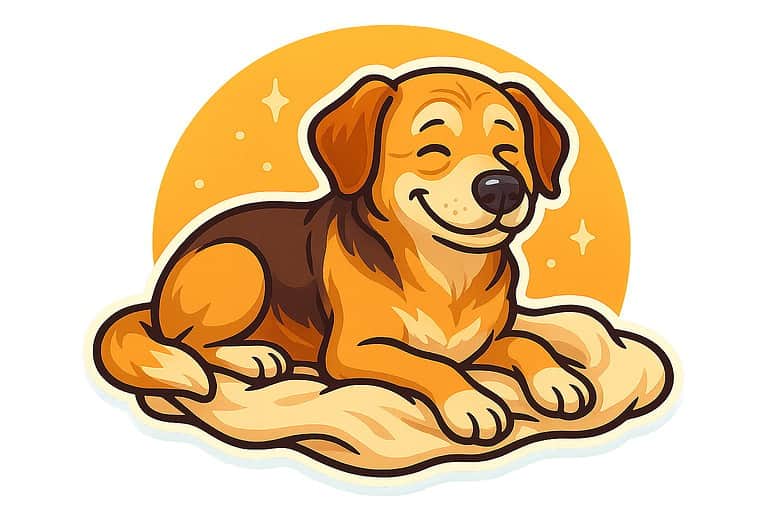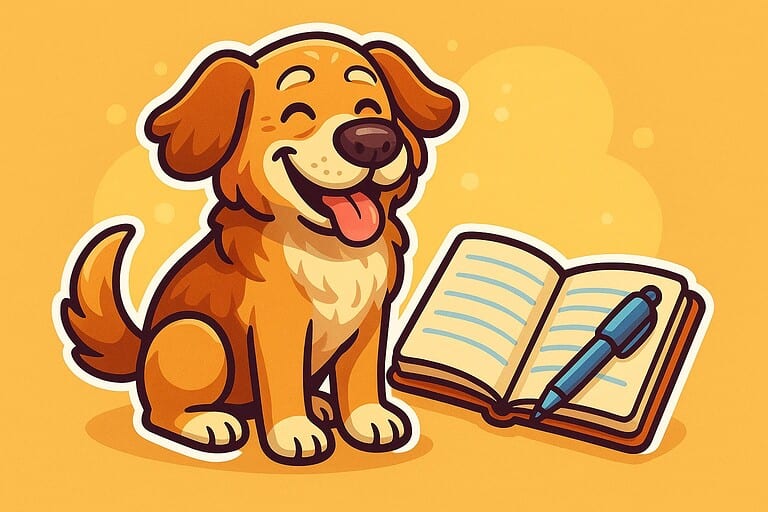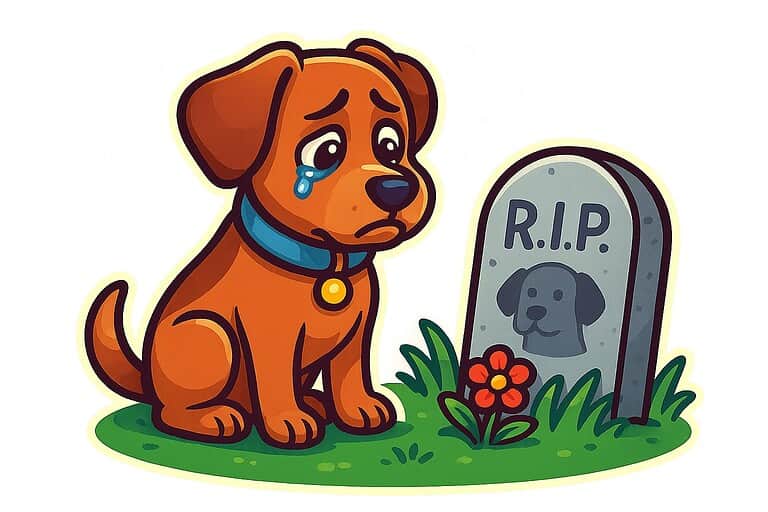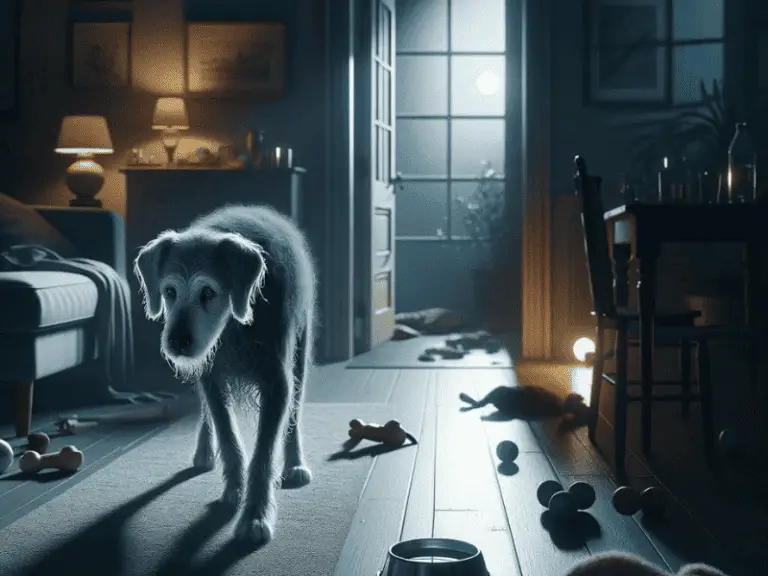11 Ways to Make Everyday Life Easier for Your Senior Dog

When your dog becomes a senior, things start to change. This also means new demands on you as their owner. Of course, you want to make sure your dog continues to feel good and is comfortable despite the little aches and pains that come with age.
Luckily, there’s actually a lot you can do! I’ve put together 11 tips to help make everyday life easier for your senior dog, all with minimal effort.
Of course, you can’t stop time. But there are still many little things that, by the end of the day, can make the difference between your dog having a good day or not.
💡 Tip #1: Lots of Extra Cuddles
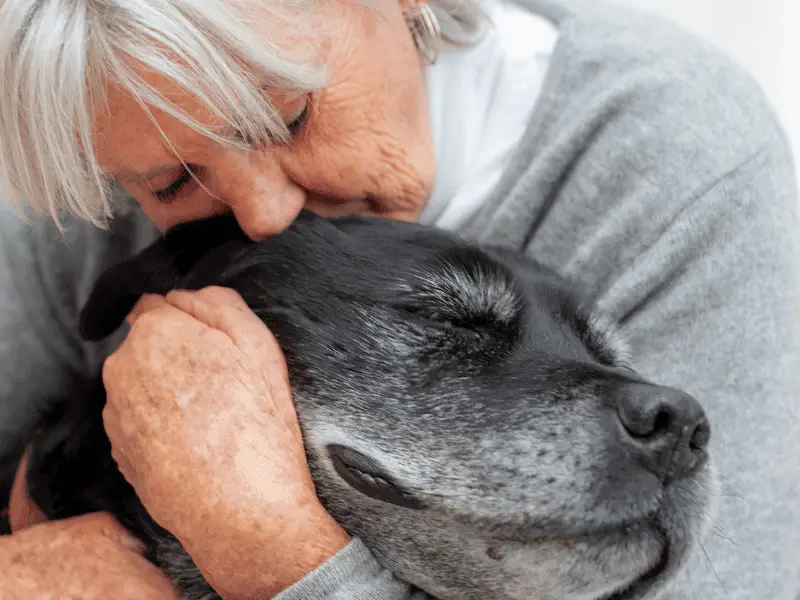
This is probably the simplest way to make your senior’s daily life a little easier. And I really mean it—petting is especially beneficial for older dogs.
Blood circulation declines with age, especially in the smallest blood vessels (capillaries). As a result, the surrounding tissues don’t get as much supply as they need.
You can often see this in your dog. The tiniest blood vessels are, for example, in the skin and also nourish the hair roots. Poor coat quality or susceptibility to skin conditions can be signs of weakened circulation.
Your gentle touch massages your dog and thereby improves blood flow. Using a massage brush is even better for your pup, but your hand is perfectly fine, too.
So remember to keep stroking, petting, and cuddling your senior dog as much as you can.
💡 Tip #2: Routines and Rituals
Dogs love routines, rituals, and familiar routines. They look to these for guidance because predictable patterns help them feel secure. They know what’s coming next and where they are in their day’s rhythm. Rituals also help with their sense of time.
This is particularly important for older dogs with dementia, who often struggle with these cues. A consistent evening routine is important so they understand when it’s time to wind down for the night.
You can use routines in lots of other situations, too—like when you need to leave your dog alone or when it’s time for their medication. Doing things the same way each time helps your furry companion accept these situations more easily.
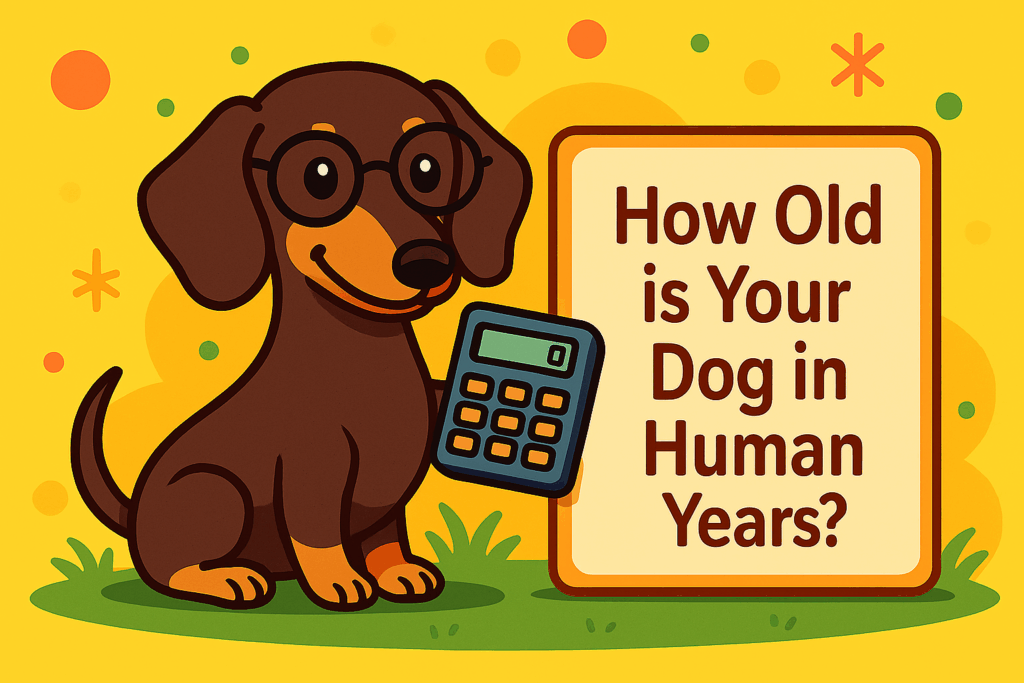
How Old Is Your Dog In Human Years? Find Out in Seconds!
Enter your dog's age and instantly see what that means in human years.
💡 Tip #3: Nose Work
Nose work refers to any activity that primarily uses your dog’s nose. Dogs of all ages find scent work exciting, but it’s especially good for seniors because their sense of smell doesn’t decline nearly as much as their hearing or sight.
That means even in old age, they can still sniff out treats with ease. And, your dog doesn’t have to move around much to take part—so it’s perfect for dogs who can’t manage long walks anymore.
Of course, you can lay out full scent trails across a field. But a simple snuffle mat or scattering some kibble in the garden is just as good.
Nose work is great for other reasons too: it exercises your dog’s brain. Mental stimulation is important for slowing the progression of dementia in older pups.
At the same time, it tires your dog out! If your senior can’t handle long walks anymore, nose games can wear them out and help them sleep better.
💡 Tip #4: A Quiet Retreat
The older your dog gets, the more rest and sleep they’ll need. Your pup will let you know if things are too much for them. If they withdraw from noisy situations, like when you have visitors, make sure they have the chance to escape and rest.
Provide a quiet and comfortable spot your dog can access at any time. Be sure to let visitors know your dog should not be disturbed while they’re there. This is not just for your dog’s benefit.
Older dogs sleep more deeply, partly due to declining hearing. This can make it hard for them to notice when someone approaches. If startled awake by a sudden touch, they might get a nasty scare.
Some dogs will even snap reflexively out of fright—not to bite, but as an automatic response. Make sure visitors, especially children, respect your dog’s retreat. Always keep an eye on the kids.
💡 Tip #5: Avoid Stairs and Jumping
Senior dogs should avoid movements that put extra strain on the joints—like climbing stairs or jumping. One of the main reasons is arthritis.
Arthritis is very common in older dogs, especially in their hips and knees, but it can develop in other joints too.
A noteworthy detail from a retrospective study by the Uni Giessen: female dogs are much more likely to suffer from arthritis—80.9% of females in the study had arthritis, compared with 59.2% of male dogs.
Many dogs have to jump in and out of the car daily. For older dogs, it’s better if you lift them in and out. If your dog is too large to carry, get a ramp—it will save your back and your dog’s joints.
Sometimes, stairs are impossible to avoid in everyday life. One step at the front door is fine, but if you live on the third floor, it’s another matter. Small dogs can ride up and down in a pet carrier. But clearly, that’s not an option with, say, a Great Dane.
In that case, always go slowly and make sure your dog never runs down the stairs or jumps them altogether. If you have an elevator, only use that from now on.
💡 Tip #6: Nightlights
If your dog can’t see as well anymore or suffers from dementia, a nightlight can be a real help. Technically, dementia in dogs is called “canine cognitive dysfunction syndrome.”
According to the TiHo Hannover, 30–50% of all senior dogs are affected. The older the dog, the higher the risk of dementia.
Nightlights help both dogs with cataracts and those with dementia. Both groups struggle with orientation, and a little bit of light makes it much easier for them to find their way around at night.
It’s best to install several nightlights that lead your dog through your home, so they can find their bed, water bowl, and your sleeping area, even at night.
Nightlights aren’t expensive, and they don’t have to stay on all night. Consider options with motion sensors, so your dog can sleep in real darkness but have the light they need when moving around at night—the lights will come on as they move from spot to spot.
💡 Tip #7: Warmth
Older dogs get cold more easily. Their skin thins, their blood circulation isn’t as good, and their metabolism slows down. They simply need a little more warmth. If you don’t want to turn up the heat for everyone, you need to keep your senior cozy in other ways.
Give them an extra blanket in their bed. In general, make their sleeping spots softer and more snuggly. Place their bed in a warm spot, but not right in front of a heater. When winter temperatures drop below 5°C (41°F), it’s time for many seniors to wear a dog coat.
Small dogs feel the cold much faster, since they have a relatively large body surface area to lose heat. If your furry friend seems chilly even indoors, let them wear their coat inside too.
Warmth isn’t just about comfort for your senior. If they’re cold, they burn more calories. For picky eaters, that can mean losing energy they don’t take in, risking underweight—which makes them feel even colder!
And don’t forget: the immune system doesn’t work as well when your dog is cold all the time. They’re more likely to get sick as a result.
As you can see, keeping your senior warm helps them in more ways than one.
💡 Tip #8: Orthopedic Dog Bed
Seniors often suffer from back pain and tense muscles. A high-quality orthopedic dog bed can really help. Sure, it costs more than a basic dog bed, but it offers much better support.
This relieves pressure on their muscles and joints and keeps the spine in a natural position—no sagging! Even calluses will improve over time.
Don’t expect miracles, though—a good bed won’t make all the pain go away, but it will ease discomfort and help your dog sleep better at night. And sleep is so important as they age.
When buying, make sure the cover is removable and washable. Senior dogs may have the occasional accident, so it’s great to be able to just toss the cover in the washing machine.
And don’t worry if you think your dog might turn their nose up at a new bed. While stubborn seniors may cling to their old favorite, most dogs figure out pretty quickly that the new one is extra comfy and happily use it.
If your dog needs some encouragement, put a familiar blanket in the new bed and praise your pup when they use it. Personally, I recommend the orthopedic dog bed by Knuffelwuff:
💡 Tip #9: Start Training Visual Cues Early
Older dogs often experience hearing loss. Age-related hearing decline can affect any breed, but according to Uni Giessen, it’s most common in Cavalier King Charles Spaniels. High tones are the first to go, so at first you can help by speaking in a lower voice so your dog can still hear you.
However, this type of hearing loss is degenerative, which means it will get worse over time, and your dog could eventually go completely deaf.
That’s why it’s best to start training visual cues as soon as you notice any signs of hearing loss. The goal is for your dog to know a specific hand signal for every important command.
To do this, start by giving the visual cue first, then the verbal command your dog already knows. Before long, your dog will recognize the visual cue on its own, since it always gets followed by the familiar command and they’ll know what you want before you even say it.
Which cues you pair with hand signals is up to you. I’d strongly recommend at least teaching your dog a silent recall sign and a “stay” signal—both can be super important on walks.
Make sure your dog can actually see your visual cues! Use clear, obvious movements—an index finger is great for “sit,” but probably not for calling your dog back from across a field.
💡 Tip #10: Dental and Paw Care
As dogs get older, they need more TLC. Regularly caring for your dog’s teeth and paws helps prevent a lot of problems down the road.
Ideally, brush your dog’s teeth once a day. This is especially important in older dogs due to the increased risk of tartar build-up. Tartar isn’t just cosmetic; it can actually make your dog seriously ill. As you can read at AniCura, tartar can only be safely removed under anesthesia.
In old age, naturally, you want to avoid any unnecessary anesthesia. So, gently introduce your dog to tooth brushing—keeping your own safety in mind. If the process stresses your pup too much, don’t force it.
The older a dog gets, the quicker their paw pads become thick and callused. Senior dogs need extra care here to keep paw pads smooth and soft. Cracked paws can be painful and give germs an easy way in.
Use a special paw balm, or coconut oil works in a pinch! And don’t worry if your pup licks some of it off.
💡 Tip #10: Lots of Short Walks
Younger dogs love long hikes and spending all afternoon at the lake. For seniors, that’s often just too much—they need more breaks and downtime. Several short walks suited to their abilities are a much better routine for older dogs.
And your senior probably needs to go out more often anyway, simply to pee. A weaker bladder is totally normal as they age; as muscle declines everywhere, the bladder also loses holding power, so your dog will need more frequent bathroom breaks.
By stretching your dog’s exercise into three to five short walks a day, you’ll be helping them in more ways than one. And don’t forget to add a few extra potty breaks, too.
Conclusion
As your dog ages, everything slows down and life gets a bit quieter. Adjust to this and pay attention to your dog’s needs—you’ll both navigate this new stage just fine.
You don’t have to simply accept most signs of aging. As you’ve just read, there’s nearly always a way to make your dog’s senior years more comfortable. You know your dog best and what they need in the moment.
The most important thing is that you stay by your senior dog’s side. There will be tough moments along the way, but stick with it—you’ll both adjust to this new normal in no time.

